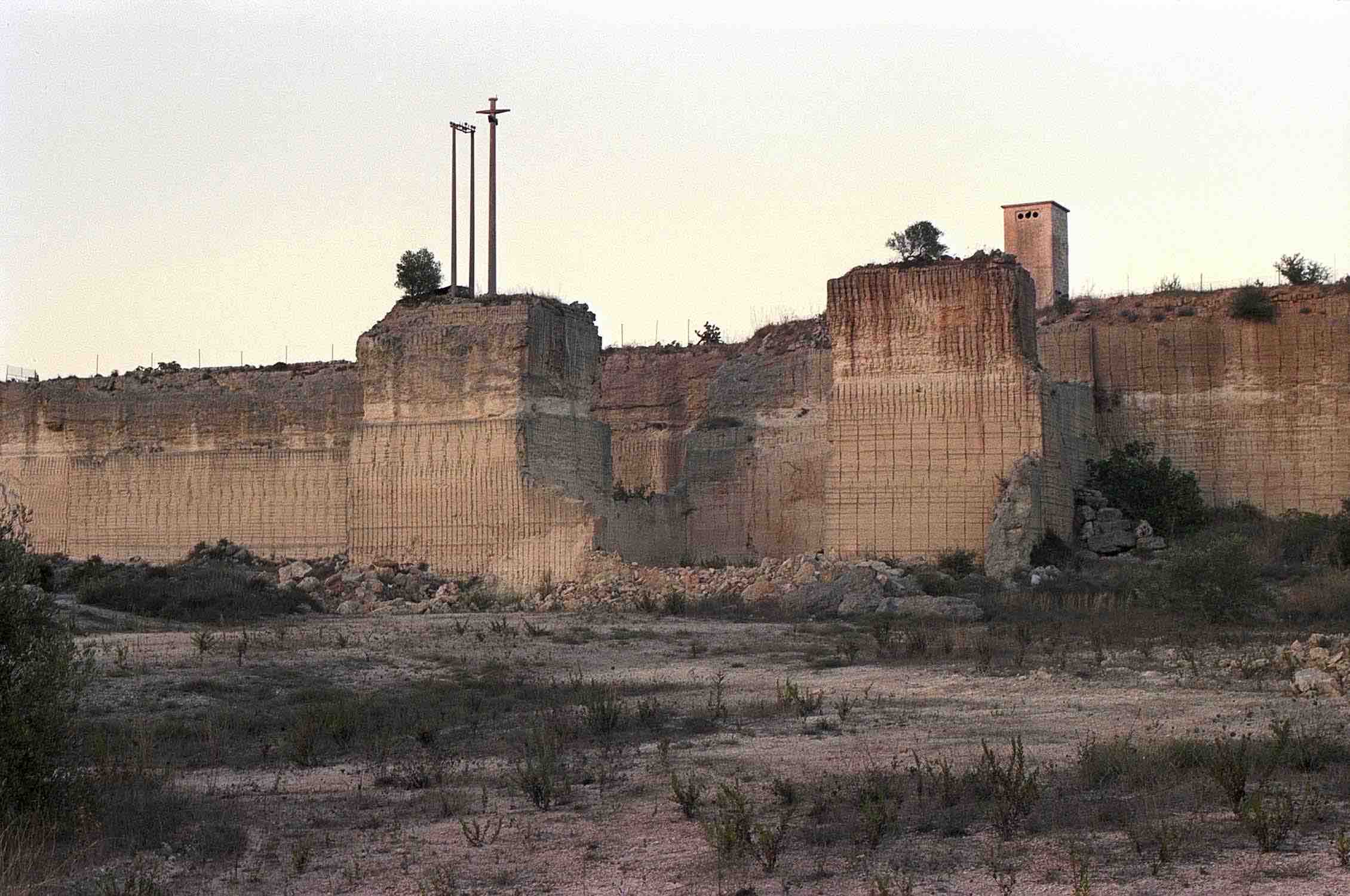FABRIZIO BELLOMO
> How was the idea of Villaggio Cavatrulli born? What was the process, mental and material, that led to its conception and finally to its realization?
It is a project born and raised because of my summer roaming around Puglia. For more than a decade, especially in the summer, I have photographed these remains and the Apulian mining areas that generated them. From those – for example – messapics to those still active. So, for the first 7/8 years I made these photographs without even imagining that they would become part of a project. It was more a something made for pure personal pleasure. Made in places that I love and that I habitually visit. In recent years, however, something has changed and it was as if the long period (now become) of incubation, has led to a voracious desire for formalization and ‘externalization’: so these notes of wandering have become “Villaggio Cavatrulli”.
> The project also saw the participation of Ugo La Pietra. How did the collaboration come about and how did it affect your work?
Through Rossana Ciocca, it was she who – in Milan – wanted to present us. I highly esteem Ugo and I believe that there is something that unites us in being both interested in vernacular culture as well as in multidisciplinarity. His collaboration was limited in the creation of two works that we co-signed, in which he designed and I put the photographs and the ‘precise’ indications on how to make these designs.
> How do you place Villaggio Cavatrulli inside your artistic career? Is there a connection (theoretical, technical …) between the analysis of digital photography, object of your previous works, and the mapping of a landscape?
It’s true I’ve often been interested in representation. (And not just digital photography). But I have never circumscribed my desire to know … However, the mapping itself – as a concept – is a potential trait d’union between the two things you mentioned: “Cavatrulli” and the previous works on representation. Mapping a landscape through the archiving of the images that represent it or mapping a face through the numerical translation of the ‘Tasselli’ that represent it are, in the end, two very similar operations. Another facet in common with my works is this attention to the gap (common to an innumerable number of artists): in “Cavatrulli” it is about stone architectural waste, while, for example, in the work on proofs – these are sheets of paper intended for the paper shredder to have attracted my attention. But anyway I do not like to place, place myself or even be placed. Sincerely.
>Villaggio Cavatrulli is a project that consists of two phases: the result of the first is what we see today exposed to the Italian pavilion, the mapping of the remains of the eroded quarries, while the second, still under construction, consists in the design of a possible use for a residential usage of these “waste”.
Do you think it is possible to combine, in such a complex context as the Italian and Puglian, a utopian vision of living to a then concretely realizable?
“Villaggio Cavatrulli” is first of all an idea. An idea of different use and conception of the territory and the extraction methods carried out on it.
Design the extraction. We should go back to designing the extraction. “Villaggio Cavatrulli” is nothing new, but simply a contemporary reinterpretation of the ancient ways of using the territory: just look at many hypogean architectures to realize it …
On the feasibility … well we have already started a real path of realization down in Salento – in Cursi – in a pit of Pitardi Cavamonti Srl. They follow, finance and participate in the project for some time. We are together (and also through the collaboration of architect Domenico Pastore) realizing for the first time in an industrial key, a process of extraction resulting from a “concave design”. Upstream. So you do not have to ask yourself every time what to do with these holes created in the landscape by the extraction process. But design and model them a priori. These holes. As was done with the hypogea, in fact. Obviously everything is in an experimental phase. Experimental but real.
–
Fabrizio Bellomo (Bari, 1982) lives and works in Bari, Milan and Berlin.
Artist, curator and director, he carries out his research in a hybrid and multidisciplinary way. His installations and audiovisual, yet photographical works were exhibited in Italy and abroad, both in solo and collective projects in institutions such as Fotomuseum Winterthur, Museo di Fotografia Contemporanea, Triennale di Milano, Pino Pascali Museum, Merz Foundation. His first movie L’Albero di Trasmissione was presented in the occasion of 55th Festival dei Popoli, Florence. In 2012 he won Premio Celeste. He also curated the books Le persone sono più vere se rappresentate, Postmedia Books, Milan, 2014; L’isola che non c’è. Bari, quartiere San Cataldo, Linaria, 2015; Meridiani, paralleli e pixel. La griglia come medium ricorrente, Postmedia Books, Milano, 2017. In 2018 Fabrizio Bellomo was selected for Arcipelago Italia, Italian Pavilion at 16. Biennale di Architettura of Venice.
Cover Image: © Fabrizio Bellomo, Villaggio Cavatrulli; archetipo 6; archivio fotografico; 2010-2015 Courtesy Fabrizio Bellomo
25/07/2018

